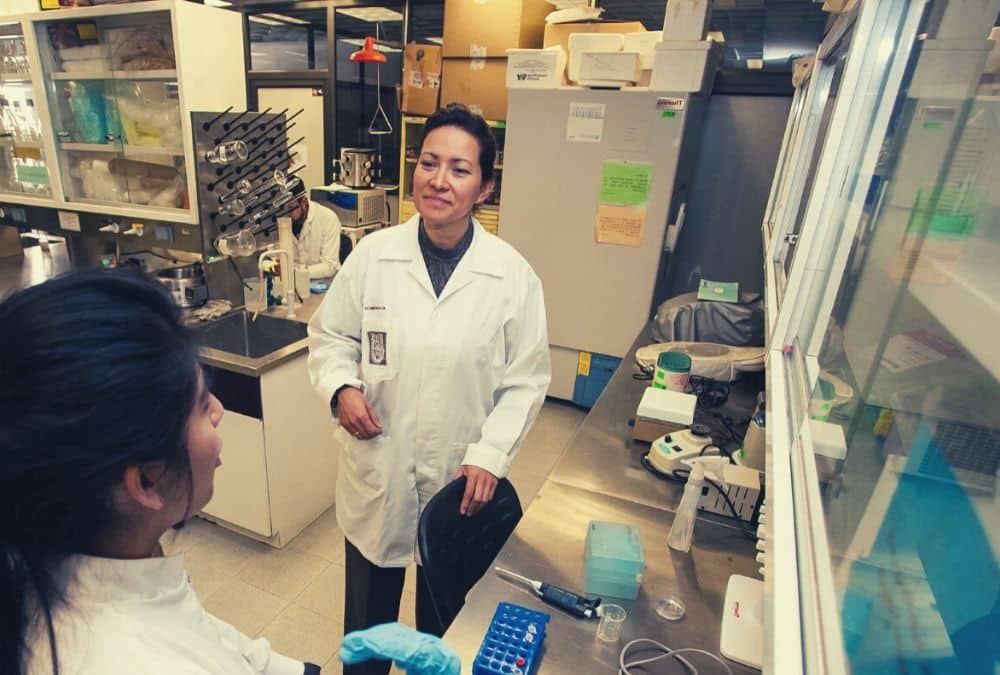This headline has been quite popular in the media as of late.
Scientific sources have been publishing information about this topic, as well as reputable, and not so reputable news outlets.
Is it really true?
Have scientists in Mexico really discovered the cure to a virus that is rapidly become the most common sexually transmitted infection in the United States?
Sadly, the short answer is no.
A team of highly-trained scientists from Mexico have claimed “cure HPV” using a fairly new technology called Photodynamic Therapy (PDT) combined with Aminolevulinic acid (ALA), a gel that helps the therapy work better, to kill cancer cells.
Read below to learn more about PDT, ALA, and whether or not this is the end-all treatment for HPV.
ALA and Photodynamic Therapy (PDT)
PDT is commonly used as a treatment for cancer, using a particular type of light in combination with a specific photosensitizing agent, ALA.
ALA, particularly 5-aminolevulinic acid, is an amino acid that is involved in a special pathway called porphyrin synthesis in your body. Aminolevulinic acid is the special addition used in combination to specific wavelengths to treat cancers with overgrowths of the skin.
How does ALA-PDT work?
The combined therapy attacks the skin cells of genital warts that continue to expand when they shouldn’t. In addition, the therapy was specific enough that it targeted these cells but left the normal, healthy skin cells alone.
What else is PDT used for? PDT has also been used for acne, precancerous lesions, such as actinic keratosis, and melanomas of the skin.
Can I get ALA-PDT from my doctor?
ALA-PDT has only recently been introduced and accepted for use in some countries, especially in Mexico City, for cervical cancers, precancerous lesions, and HPV-related symptoms, such as genital warts.
Does it actually work?
Most clinical trials show that PDT is highly effective when compared to placebo treatment. When targeting CIN or HPV infections specifically to each patient, the complete remission rate is improved significantly. However, most of the studies included were of lower quality, so they may not be quite as reputable.

Which situations would ALA-PDT be beneficial?
Studies show that with ALA-PDT, HPV can be effectively eliminated in those with latent or subclinical infections (currently with no symptoms), within 3 months. This is the population of people who have been diagnosed with HPV but have not or are not currently showing symptoms.
The current research does show that those with CIN responded very well to PDT.
How does it compare to other therapies?
ALA-PDT also poses a very low risk to fertility, current, and future pregnancies. It is also fairly minimally-invasive, as it is a non-surgical procedure involving no blood loss, no damage to the cervical tissue, and no reports of infertility. In these situations, ALA-PDT may be a treatment of interest for you.
This therapy can also be more cost-effective than some other, more invasive procedures. If your case is more resistant to PDT, it may end up costing more in the long run.
Reported side effects include: red, itchy skin, swelling, burning or stinging at the site of treatment.
The Bottom Line
Current research on available clinical trials show that PDT combined with ALA could possibly be effective in the treatment for HPV and associated conditions – but more, higher quality research needs to be done.
Infections of early or late stage, with or without CIN, and even infections progressed into cervical cancer are all potentially treatable by ALA-PDT.
Trials are all new and of varying qualities, but the research available is all we have to determine the benefits of this new therapy.
The News Headlines
The work that is currently publicized in the media is in regards to Mexican scientists who have claimed to use ALA-PDT to eradicate HPV completely in 29 women.
While the reports are interesting, especially with the currently available information on ALA-PDT, their findings have not been published yet and are unlikely to be a be-all-end-all cure for HPV.
Be careful of the credibility of information out there. Keep in mind the source of information before making decisions about your health and treatment.
How Does Papillex Come Into All This?
By boosting your natural immunity and replacing missing and low nutrients, Papillex™ can help you to create an environment inhospitable to HPV and its common symptoms, cervical dysplasia and genital warts.





